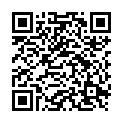|
|
|
| Module code: E938 |
|
|
1V+1U (2 hours per week) |
|
3 |
| Semester: 9 |
| Mandatory course: no |
Language of instruction:
German |
Assessment:
Written exam and mini-project
[updated 01.10.2020]
|
E2935 (P231-0113) Electrical Engineering and Information Technology, Master, ASPO 01.04.2019
, optional course, technical
E938 (P211-0263) Electrical Engineering, Master, ASPO 01.10.2005
, semester 9, optional course
E1922 (P211-0263) Electrical Engineering, Master, ASPO 01.10.2013
, optional course, technical
MTM.STA (P231-0113) Mechatronics, Master, ASPO 01.04.2020
, optional course, technical
MST.STA (P231-0113) Mechatronics and Sensor Technology, Master, ASPO 01.04.2016
, optional course, technical
MST.STA (P231-0113) Mechatronics and Sensor Technology, Master, ASPO 01.10.2011
, optional course, technical
|
30 class hours (= 22.5 clock hours) over a 15-week period.
The total student study time is 90 hours (equivalent to 3 ECTS credits).
There are therefore 67.5 hours available for class preparation and follow-up work and exam preparation.
|
Recommended prerequisites (modules):
E806 Higher Mathematics II (Numerical Methods and Statistics)
[updated 09.12.2013]
|
Recommended as prerequisite for:
|
Module coordinator:
Prof. Dr. Gerald Kroisandt |
Lecturer:
Prof. Dr. Barbara Grabowski
[updated 09.12.2013]
|
Learning outcomes:
Statistical methods play an important role in engineering-related studies, especially in electrical engineering, e.g. in analyzing stochastic signals and processes, planning experiments and evaluating observed data, modeling, simulating and optimizing processes, recognizing and modeling interrelationships.
Based on the basic course "Probability Calculation" (Higher Mathematics II (Part: Statistics) (E806), students in this course will learn advanced statistics methods. Mini-projects will help students learn to plan and implement the solution of more complex problems with more extensive data material using a statistics programming language (e.g. R).
After attending the lecture, they will be able to solve more complex statistical problems, as they occur in communications engineering and automation engineering, independently and in cooperation with mathematicians.
[updated 01.10.2020]
|
Module content:
1. Statistical inference methods
1.1 Hypothesis testing
1.2 Distribution tests
2. Generating random numbers
3. Stochastic processes
(Definition, classification, covariance function and spectral density,
cross correlation function, stationarity, ergodicity)
4. Markov chains and applications in coding and information theory
5. Poisson point process
6. Markov processes
7. Birth and death processes
8. Introduction to traffic theory (= queueing theory)
9. Introduction to the simulation of discrete systems
10. Mini-projects
11. Stochastic signals
Depending on the clientele further/other topics:
12. Introduction to further statistical methods
12.1 Regression and correlation analysis
12.2 Analysis of variance
12.3 Mini-projects
[updated 01.10.2020]
|
Teaching methods/Media:
Blackboard, overhead projector, video projector, lecture notes, PC
[updated 13.03.2010]
|
Recommended or required reading:
B.Grabowski: _ ActiveMath:Statistik: Statistik für Ingenieure technischer Fachrichtungen an Fachhochschulen - e-Lerning-Buch_,
H.Weber: _Einführung in die Wahrscheinlichkeitsrechnung und Statistik für Ingenieure_
B.Grabowski:_ Lexikon der Statistik_, Elsevier-Verlag, 2001
B.Grabowski:_ Stochastik_, Lehrmaterial für das Fernstudium, Zentralstelle für Fernstudien an Fachhochschulen , ZFH Koblenz, 2004.
B.Grabowski:_ Die Simulationssprache AWESIM_, Lehrmaterial für das Fernstudium, Zentralstelle für Fernstudien an Fachhochschulen , ZFH Koblenz, 2000.
B.Grabowski:_ Mathematische Methoden bei der Simulation diskreter Systeme_,
Lehrmaterial für das Fernstudium, Zentralstelle für Fernstudien an Fachhochschulen , ZFH Koblenz, 2000.
To be found at www.htw-saarland.de/fb/gis/mathematik:
1) Vorlesungs-Skript I and II (Lecture notes I and II) - Internet
2) Formelsammlungen 1 und 2 zum Skript I und II (Formulas 1 and 2 for script I and II)
3) Übungsaufgaben und Lösungen zum Skript I und II (Exercises and solutions to script I and II)
4) Lernserver ACTIVEMATH
[updated 01.10.2020]
|


